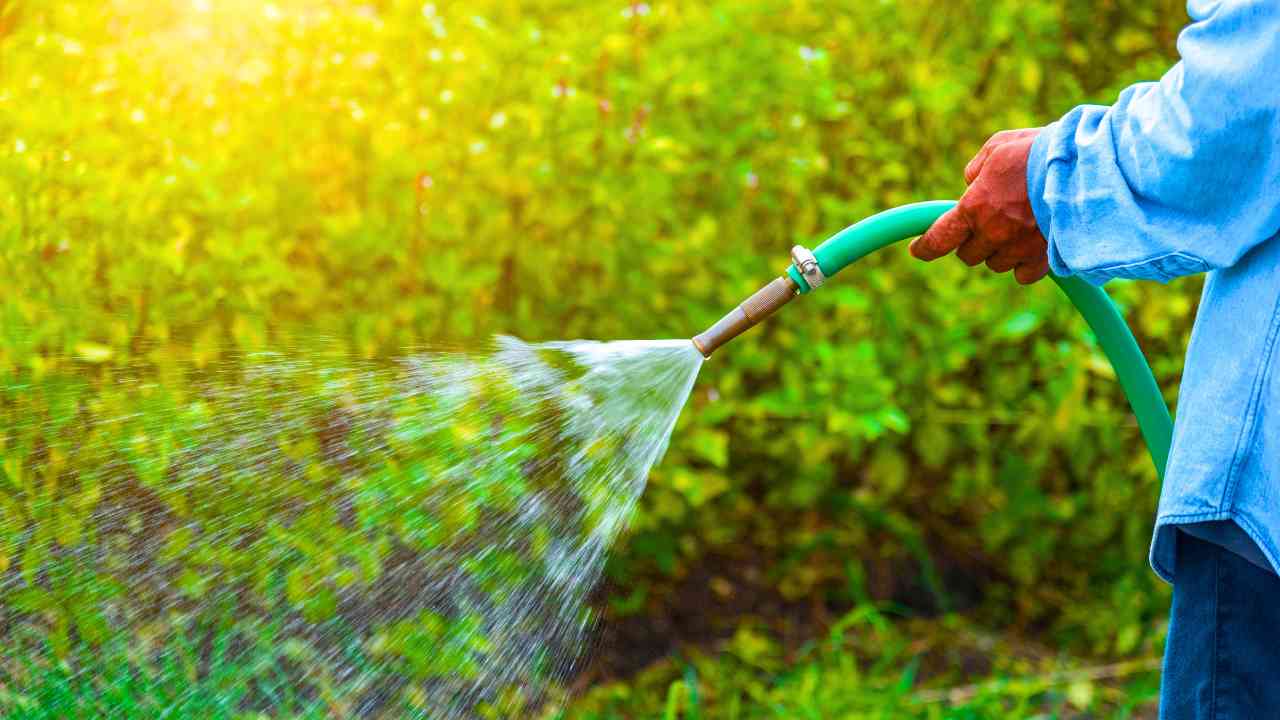An established vegetable garden should generally be watered one to three times a week. As you see appropriate, divide the 1 to 2 inches of water that most vegetables require each week among your weekly watering sessions. To determine how often to water your vegetable garden, you need to know much more than just the general rule.
For starters, the age of your plants affects how much water they require and how often they should be watered. Watering newly planted seeds should be done daily. Different soil types and plant species require different amounts of water. Our garden watering advice will show you how to determine how frequently to water your vegetable garden, taking into account all of its unique characteristics and possible issues.
Our best advice for watering vegetable gardens:
1. Discover how to irrigate your garden based on the type of soil.
2. The water requirements of vegetable plants vary.
3. Adjust the irrigation schedule according to the stages of the plant life cycle.
4. Root depth is a crucial component.
5. More water during heat waves
6. Reduce the frequency of irrigation in humid climates.
7. During windy times, adjust the watering schedule.
8. Rainfall factor
9. Using mulch reduces the frequency of watering.
10. Adapt the watering schedule to the sort of garden you have.
11. Water in the morning
12. Apply water to the soil rather than the leaves.
13. Calculate how much water you supply.
14. Verify the moisture content of the soil.
15. Keep an eye out for underwatering symptoms and manage drought stress.
16. Watch for signs of overwatering and learn how to treat soggy soil.
FAQ
1. Discover how to irrigate your garden based on the type of soil.
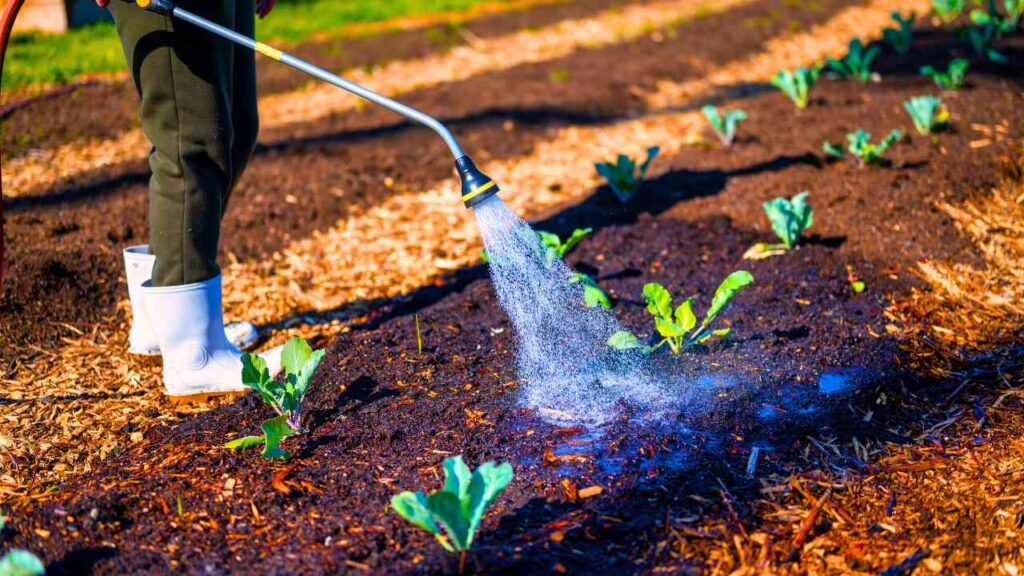
Sand, silt, and clay particles make up the soil’s mineral component. One of the following soil types exists in your garden, depending on the kind of mineral particles that predominate:
- Clayey soil
- sandy ground
- Silty soil
- Loam (a well-balanced combination of all three)
- Because each kind reacts differently to water, they all require various amounts of irrigation.
How frequently sandy soil should be watered?
Water sandy soil two or three times a week, and more frequently during periods of extreme heat and drought. Sandy soil feels rough to the touch because of its big, coarse particles. Water is swiftly absorbed and released into the soil’s lower layers due to its huge pores and loose structure. Only a tiny portion remains in the topsoil and is accessible to root systems.
- Low water-holding capacity
- Drainage: Outstanding
- Fertility: Organic matter is low. needs manure, humus, and compost as soil additions on a regular basis.
- Better for: celery, beets, parsnips, carrots, and turnips, which are tap-root vegetables.
Water sandy soil more often and for shorter periods of time. Apply 1 inch of water, for instance, in two applications of 0.5 inches each as opposed to one application. For sandy soils, a flow rate of 0.4 to 0.8 inches per hour is advised.
The frequency of clay soil watering
Apply water to clay soil sparingly, gently, and deeply. Usually, one watering session per week is enough. Only if plants exhibit symptoms of underwatering should the frequency be increased during periods of extreme heat and drought.
Tiny pores and small particles in clay soil impede the absorption and release of water. It retains water and nutrients efficiently and has a smooth, talc-like texture.
- Capacity to hold water: High
- Poor drainage. Add organic matter (leaf mold, mulch, compost, and manure) to promote drainage and relax the structure.
- Nutrient-rich fertility.
- Ideal for: Plants with shallow roots, such as broccoli, cabbage, lettuce, and spinach.
Watering clay soil involves applying water gradually over longer periods of time to match the soil’s rate of absorption. In this manner, you avoid puddling and runoff. For clay-rich soils (clay soils and silty clay loams), Cornell University advises a flow rate of up to 0.2 inches per hour.
The frequency of watering loamy soil
Once a week, irrigate loamy soil. When there is a drought or extreme heat, water more frequently; when it rains, stop watering. Because loam contains a well-balanced mixture of silt, sand, and clay particles, it can store water well and drains well.
- Good water-holding capacity
- Good drainage
- Fertility: Nutrient-rich and well-textured. To keep it healthy, apply compost once a year.
- Best for: Loam soil is suitable for growing a wide range of veggies.
Loamy soil requires less frequent and deeper irrigation. Generally speaking, once a week is sufficient, with the exception of hot or windy weather. If there is no rain, administer around 1 inch of water every week at a flow rate of 0.4 to 0.8 inches per hour.
Examine your soil

Taking a sample and having the soil analyzed at your local Extension Office is the most reliable method of determining the type of soil in your garden.
You can also perform a do-it-yourself soil test using a jar. Here’s how:
- Gather enough dirt from your garden to fill a jar by around ⅓.
- Take out all the wood fragments, roots, and other debris by sifting through a sieve.
- Transfer it to the jar.
- Fill the jar with water, leaving room at the top.
- After shaking the jar to combine the dirt and water, place it on a level surface and let it to settle.
- The largest and heaviest particles are those of sand. It takes them around a minute to settle and create a dense covering. Measure it and mark its highest level.
- It takes roughly two hours to define the silt layer. Measure it and mark it.
- The particles of clay are light and fine. It takes them roughly 48 hours to settle on top of the silt layer and clear the water.
- If the layer of sand in the jar is the thickest, you have sandy soil. It is clay soil if clay particles predominate. Loam has layers that are roughly equal.
2. The water requirements of vegetable plants vary.
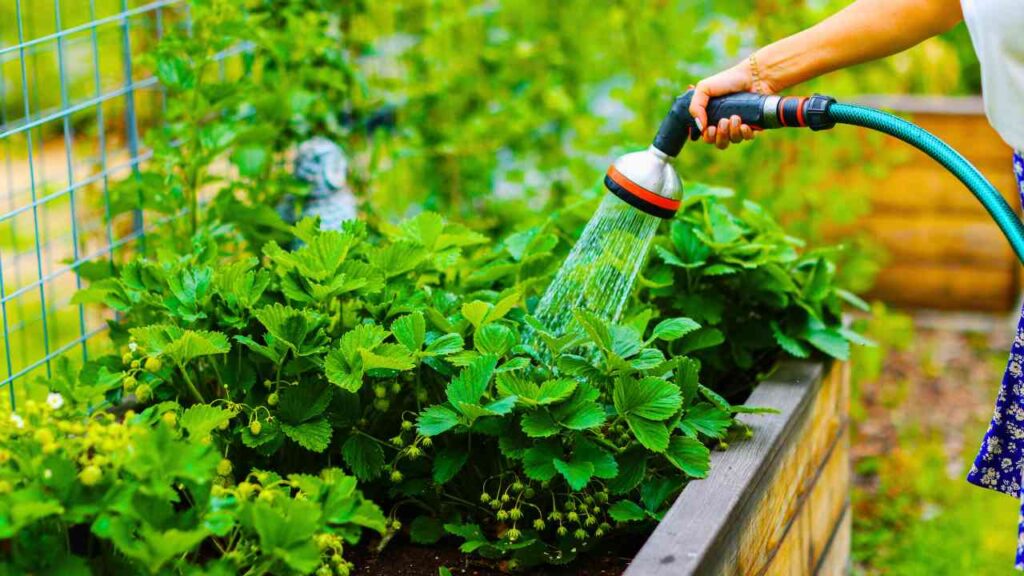
Every plant has different water requirements. Certain herbs, such as thyme, rosemary, and sage, require less water and can perish if overwatered. While fruiting vegetables like tomatoes, cucumbers, zucchini, and squash require more water to grow well, leafy greens are also less demanding.
The typical water requirements for the most popular plants and vegetables cultivated in home gardens are shown in this table.
frequency of watering. Let’s examine how you might modify the watering schedule to achieve optimal outcomes for the duration of your plants’ life cycles.
Types of plants
| Water Requirements Per Square Foot Per Week | Plant Type |
|---|---|
| One to one and a half inches | Arugula |
| One to one and a half inches | Basil |
| Between one and two inches | Beans |
| Between one and two inches | Peppers with bells |
| Between one and two inches | Broccoli |
| Between one and two inches | Brussels sprouts |
| One to one and a half inches | Cabbage |
| One to one and a half inches | The chives |
| One inch | Carrots |
| Between one and two inches | Cauliflower |
| Between one and two inches | Pumpkins |
| One inch | Radishes |
| One to one and a half inches | Spinach |
| Between one and two inches | Kale |
| One to one and a half inches | Cucumbers |
| One to one and a half inches | Dill |
| Between one and two inches | Eggplants |
3. Adjust the irrigation schedule according to the stages of the plant life cycle.
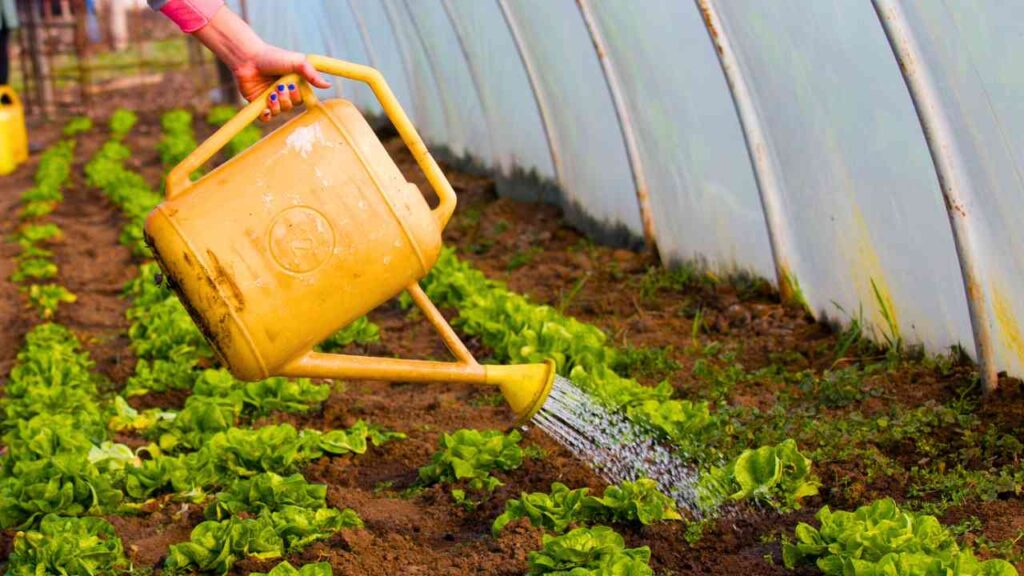
As plants go through different stages of life, your vegetable garden will require varying amounts of water. From seed to harvest, you’ll need to make the following adjustments throughout the growth season:
- amount of water
- Frequency of irrigation
- How the water is applied
To help you get a vegetable garden off to a good start and maintain proper watering as it grows, here are some watering tips.
Apply a gentle mist of water several times a day during the seed stage.
To promote germination and keep the topsoil moist, water seeds at least twice a day. Use sprinklers, a garden hose, or a watering can with a nozzle to apply a tiny amount of water in a gentle mist. Steer clear of powerful water jets. They may move the seeds around and let them come into contact with dry air.
Irrigate seedlings and transplants three to five times per week.
Since they are unable to access deep subsurface stores, young plants require water that is readily available. As their roots grow, water them every day or every other day.
The finest tools for watering young plants are soaker hoses and drip irrigation. Strong jets of falling water can easily destroy their delicate stems. If you have no other option but to use an overhead watering system, provide a gentle mist.
Water established plants one to three times each week.
Your plants’ roots are now big enough to begin searching the soil’s depths for water. Gradually cut back on how often you water until you only do so once or three times a week. Adapt the frequency to the kind of soil and the amount of rain.
It’s also time to teach your vegetables to withstand drought. Water less frequently and deeply. When vegetable plants begin to exhibit symptoms of stress, schedule a fresh watering session.
Steer clear of above sprinklers since they might cause fungal diseases in plants. Install soaker hoses, utilize a garden hose with a wand, or use a drip irrigation system. Try to avoid showering the leaves with water; instead, apply it near the base of the plant.
During flowering and fruiting, increase the quantity and frequency of watering.
Every week, as your cucumbers and tomatoes start to bear fruit, increase the amount of water you provide. Additionally, make an effort to maintain a steady moisture level. After a period of drought, adding a lot of water may cause the fruits’ skins to rupture. When fruits ripen, reduce the water content for a stronger flavor.
4. Root depth is a crucial component.

The depth of a vegetable’s roots greatly affects how easily it can obtain water from the soil. Only the water found in the top layers of the soil is used by shallow roots. Vegetables with deep roots can access underground reserves. Let’s examine how this suggestion should be incorporated into your watering plan.
Water veggies with shallow roots most of the time.
Herbs and vegetables with shallow roots only delve 12 to 18 inches into the ground. They require more regular watering in the summer and have a limited tolerance for drought. Their susceptibility is increased by sandy soil.
Vegetables with shallow roots include the following:
- Celery
- The chives
- Fennel
- Endure
- The lettuce
- Onions
- Radishes
- Shallots
- Spinach
- Chard from Switzerland
During a hot weather, you should water this category the most frequently. After rain, vegetables with shallow roots also need irrigation the most.
Watch for indications of stress in vegetables with modest roots.
Plants with moderate roots can reach a depth of 18 to 24 inches. Although they require more water during periods of extreme heat, they are less susceptible to drought than species with shallow roots. During a protracted drought, you may need to double the frequency of watering, depending on the quality of the soil. The most well-liked herbs and vegetables from this category include:
- Beets
- Cabbage
- Broccoli
- The cauliflower
- Cucumbers
- Kale
- Okra
- Peppers
- The potato
- Turnips
Avoid giving deep-rooted veggies too much water.
Species with deep roots bury themselves more than 24 inches below the surface. Because they are protected from heat and evaporation, they use the moisture stores in the lower soil layers. They just require a small increase in watering during drought if they were properly trained when their roots were growing.
Among the vegetables that are deeply rooted in your garden are:
- The asparagus
- Corn that is sweet
- Lima beans
- Melons
- Parsnips
- Pumpkins
- The squash
- The tomato
5. More water during heat waves.
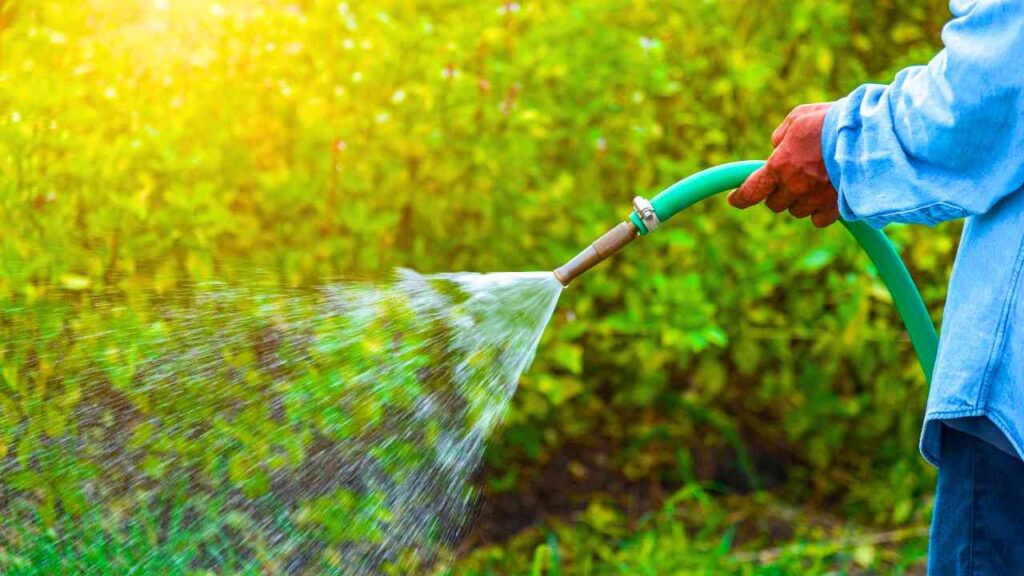
Evaporation is increased by high temperatures. A lesser portion of the water you provide through irrigation seeps into the ground to nourish the roots of the plants. The heated, dry air from the soil surface absorbs the majority.
During heat waves, irrigate as early in the morning as possible to avoid the heat and minimize water loss. Additionally, to assist veggies withstand the heat, water your garden more frequently.
6. Reduce the frequency of irrigation in humid climates.
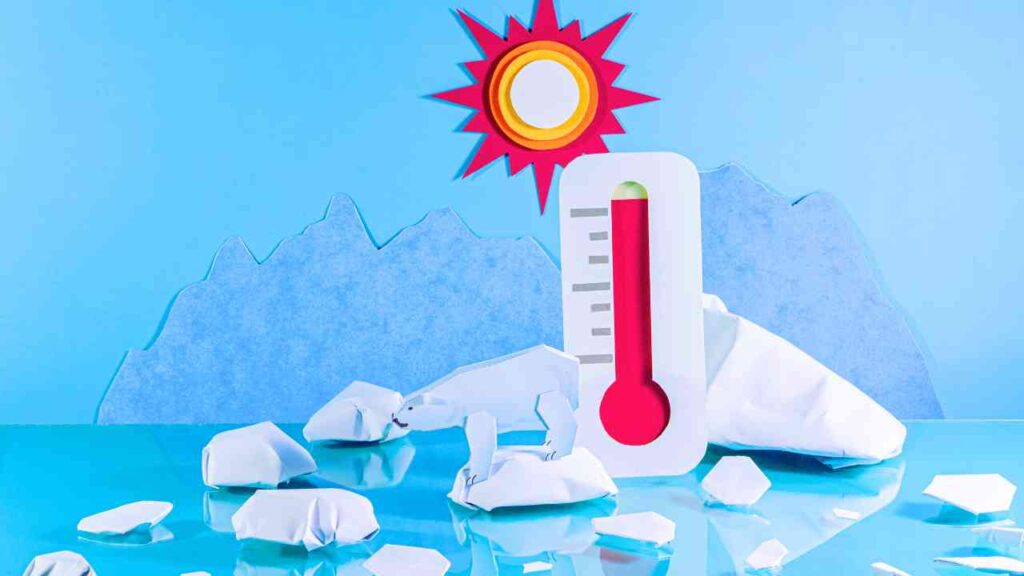
Evaporation is extremely sluggish in humid air, therefore there is little room for additional water to be absorbed. You understand if you’re from Louisiana or Mississippi. Sweat clings to your skin despite the intense heat, making it impossible to cool down. The soil is no different.
Moisture stays in the ground for a long period because of all that hot air. Evaporation is prevented by high air humidity. If you give your vegetable garden too much water in such circumstances, you run the danger of developing fungal illnesses. Prior to irrigating, check the moisture content of the soil and water less often.
7. During windy times, adjust the watering schedule.
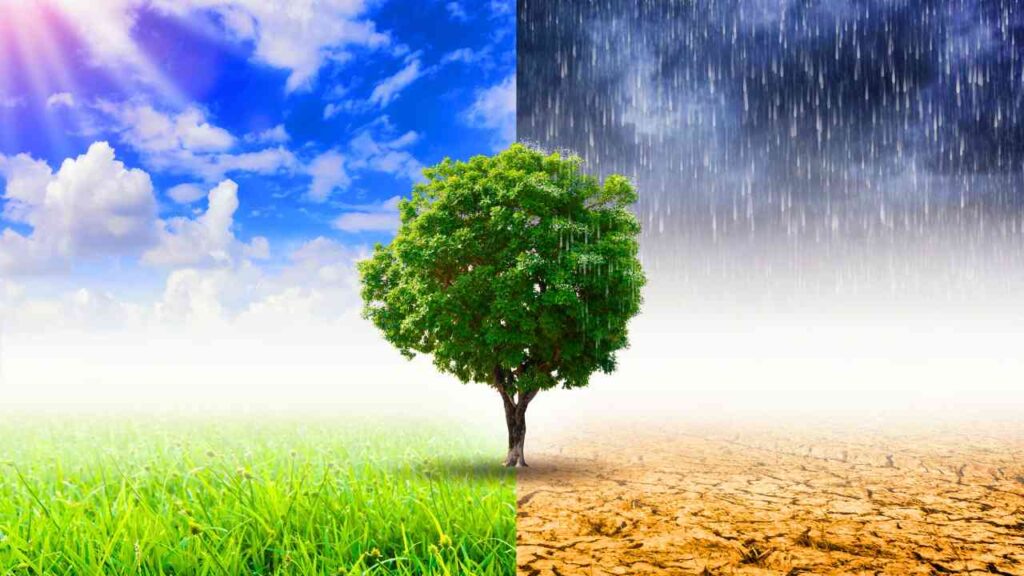
Wind dries out your soil and plants more quickly. Additionally, it may distort your experience when there is a drought. Because you will experience pleasant air currents and less heat, you may misjudge how quickly water evaporates from the soil. During windy summer weeks, make it a habit to check the moisture content of the soil in your garden and modify the frequency of watering as needed.
8. Rainfall factor.
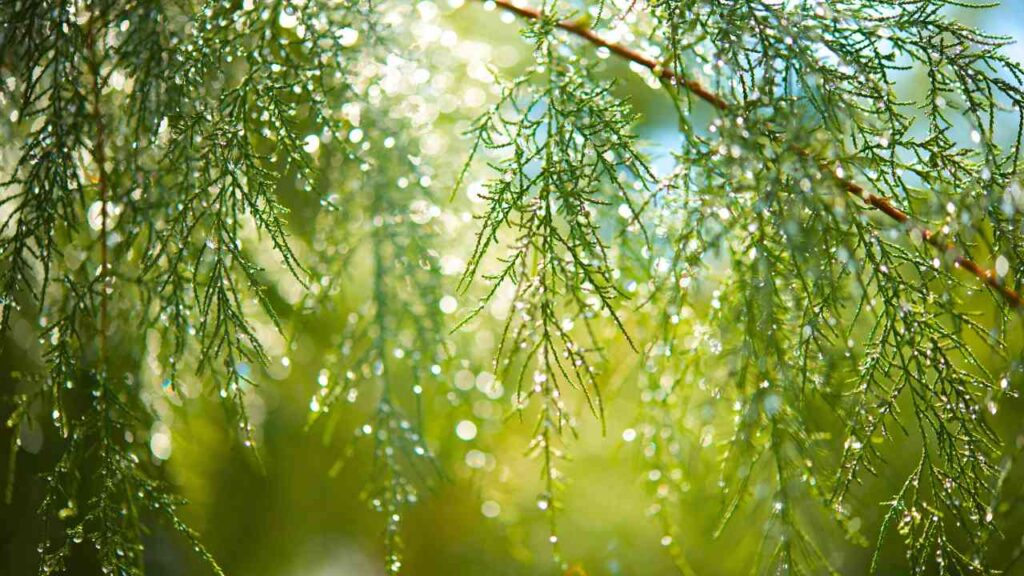
You should wait until next week to water your garden if there has been a lot of rain, about 1 to 2 inches per square foot. However, occasionally only a small amount of water reaches the earth despite the tremendous noise and a curtain of water falling from the sky. You risk your vegetables suffering if you stop watering them.
How do you tell when it’s enough to rain and how much? A rain gauge is used by seasoned gardeners. It is a straightforward, low-cost, and user-friendly tool that calculates the quantity of rainfall per square foot.
9. Using mulch reduces the frequency of watering.
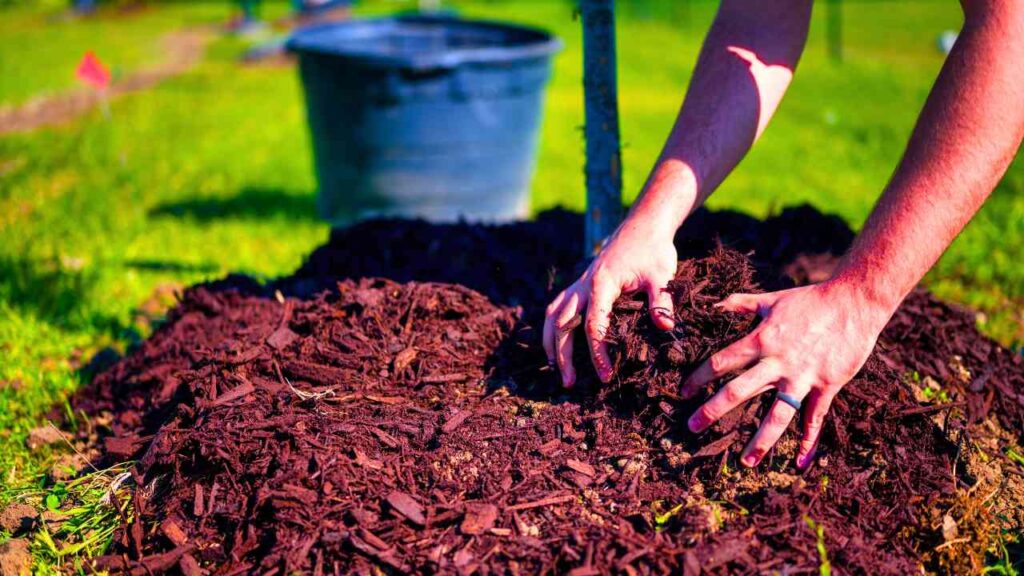
Mulching your garden beds with 2 to 3 inches of mulch is a great method to conserve water. Mulch lowers evaporation by up to 50% and keeps the soil colder.
More of what you put in is available to plants, and water stays in the ground longer. In order to prevent root rot, you must also use less water per week when mulching your soil.
10. Adapt the watering schedule to the sort of garden you have.
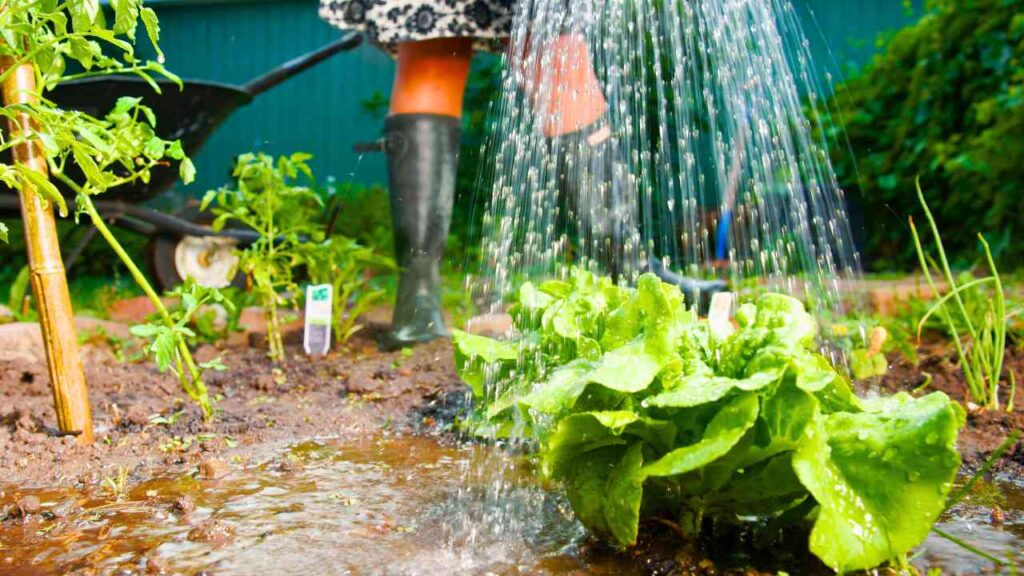
Even with the same type of soil, raised beds, in-ground garden beds, and gardening containers hold water in various ways. Depending on how you’re growing your vegetables, modify your watering plan.
Expert tip: Take a look at these vegetable garden ideas for tips on how and what to cultivate!
In-ground beds
In-ground beds provide the best thermal insulation for herbs and vegetables that are planted directly into the soil. In-ground beds are better at containing moisture since they warm up more slowly in the summer. Depending on the plants, soil type, and weather, a kitchen garden with in-ground beds may require one to three waterings each week.
Elevated beds
A garden bed’s raised portion is more exposed to dry air and heat. Raised garden beds quickly lose moisture and heated up more quickly in the summer. Raised bed plants require more frequent watering during hot weather and dry spells. Depending on the temperature, apply water two to three times a week or even every other day.
Growing in containers
The rate of moisture loss increases with decreasing soil bulk. Container gardens, particularly those kept in direct sunshine, are the first to dry out. In a hot spell with temperatures above 90°F, small ones may require twice-daily watering.
11. Water in the morning.
Early dawn is the ideal time of day to water your plants. There is little evaporation, mild temperatures, and no exposure of the soil surface to the scorching midday heat.
Before nine or ten a.m., water your veggies. throughout the spring and autumn. Get up early in the summer and water the garden by 6 or 7 a.m. to stay as far away from the day’s heat as you can.
Late afternoon to early evening is the second-best time to water if early irrigation is not possible. On the other hand, fungal infections are encouraged by nocturnal leaf dampness. When watering plants in the evening, avoid sprinkling water on the leaves because the sun will not be present to dry them out.
12. Apply water to the soil rather than the leaves.
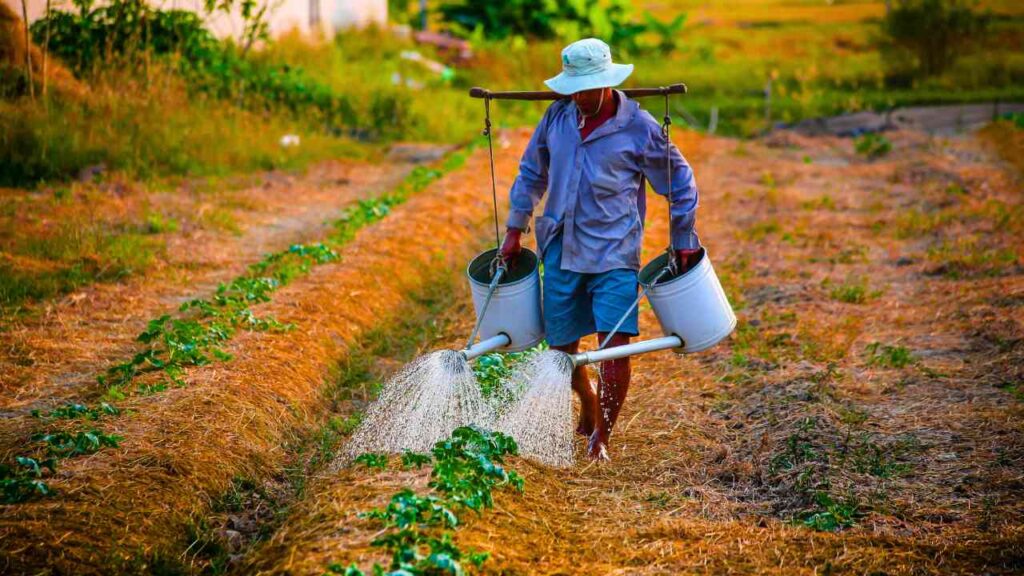
The most effective garden irrigation techniques bring water to the soil’s top so that it can swiftly seep into the root zone. The most efficient ones are soaker hoses and drip watering. Even on clay soils, they administer water gradually, facilitating easy absorption. For automated control, a timer can also be installed.
Another excellent but time-consuming choice is a garden hose with a watering wand. Small garden beds or pots can also be watered with watering cans.
13. Calculate how much water you supply.
One inch of water applied per square foot is equivalent to roughly 0.63 gallons. That equates to 20 gallons of water for a 4 x 8 foot garden bed and 63 gallons for a 10 x 10 foot planted space.
You must measure the amount of water you apply to the soil in order to determine when you have applied the proper amount and when to turn off the irrigation system.
Using a hose-end water flow meter is the simplest method. The outdoor faucet is where you install it. Since you turned on the faucet to irrigate, it indicates how much water you have used. Hose meters are easily obtained from nearby garden stores and online.
14. Verify the moisture content of the soil.
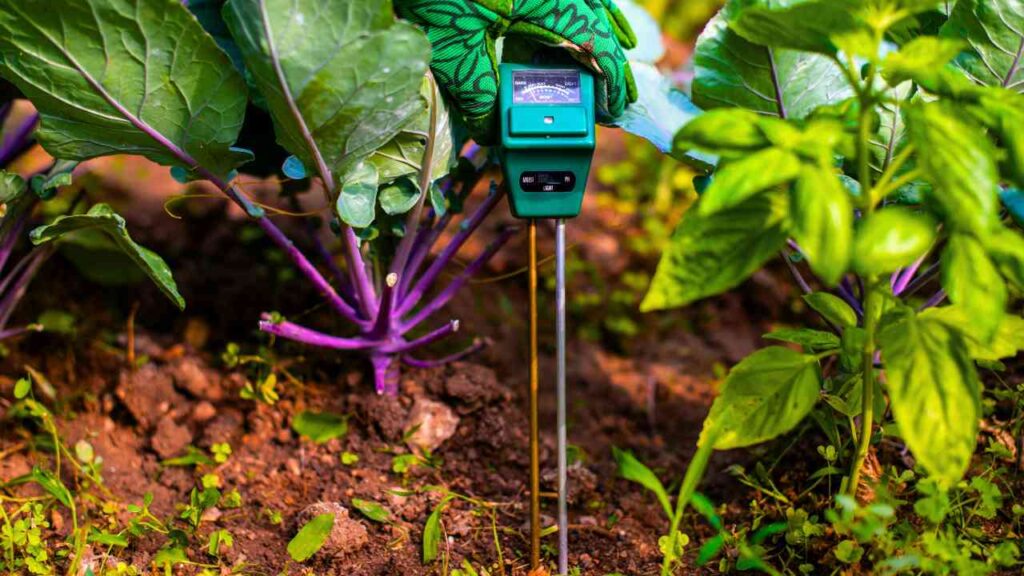
Testing the moisture level periodically is the greatest method to prevent underwatering and overwatering because there are numerous elements that affect how water behaves in the soil. The trowel test or a soil moisture meter can be used for this.
A rod that is inserted a few inches deep into the soil and a mechanical scale or digital screen that indicates the moisture content are features of the soil moisture meter. This device is so user-friendly that you can even try it out while gardening with your kids.
On the trowel exam, you’ll need to put in a little more effort. Digging is required for this one. Using a trowel, dig a hole that is a few inches deep in a free section of your garden bed. Squeeze a handful of dirt in your hand. You don’t need to water it just yet if it feels damp.
15. Keep an eye out for underwatering symptoms and manage drought stress.
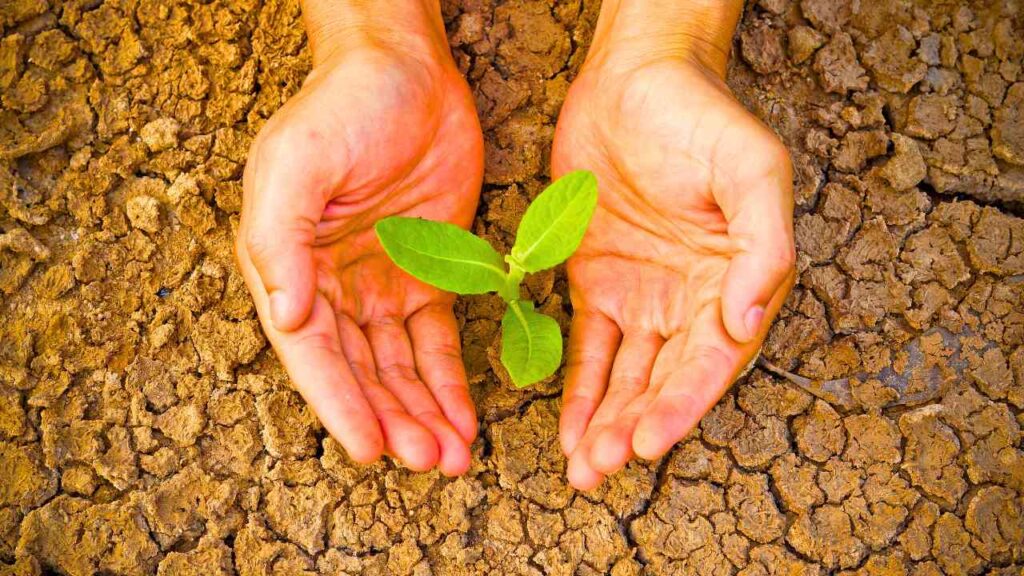
Underwatering is suspected when:
- Vegetables start to wither.
- From the base of the plant, plant leaves begin to turn yellow or develop brown patches. They coil up and have a crunchy, dry texture.
- The fruits are dry and tiny.
- The soil is dry and light.
- The main cause of underwatering is extended drought, which strains soil moisture due to dry air and no precipitation.
You may combat drought stress in your vegetable garden by doing the following:
- Spread mulch two to three inches thick. It restricts evaporation and regulates soil temperature.
- Restoring soil moisture requires deep watering.
- Offer protection from the sun (placing shade cloth is a great way to do this).
- Reduce evaporation by using drip irrigation.
- When the plants are most in need, water them more. For instance, tomatoes during flowering and fruit development, and carrots during root development.
- As early in the morning as possible, irrigate.
16. Watch for signs of overwatering and learn how to treat soggy soil.
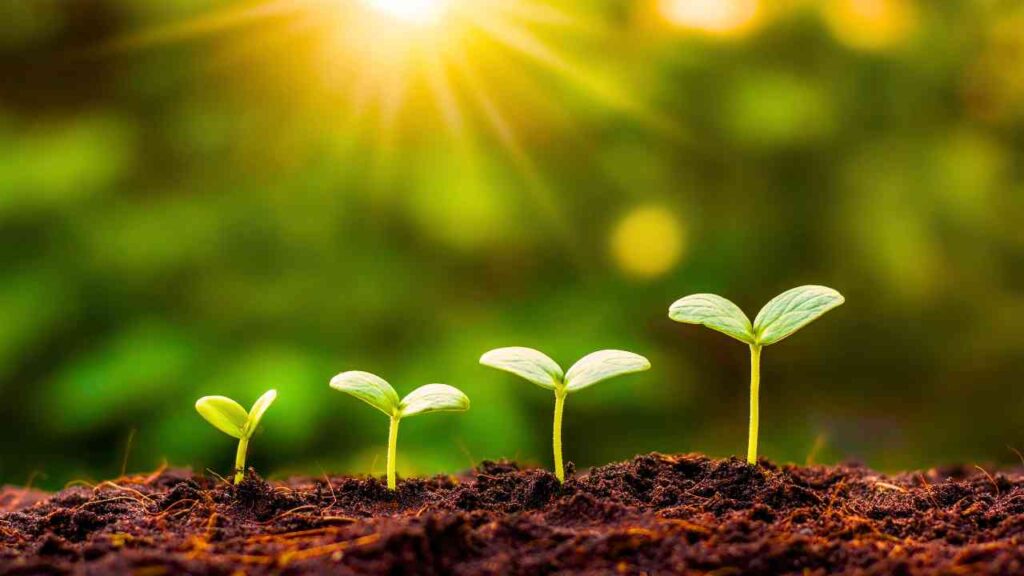
The majority of overwatering symptoms are identical to those of drought stress, but if you pay close attention to the differences, you can determine which is harming your vegetables:
- Both young and old leaves are becoming yellow, and some have brown blotches on them.
- The leaves curl downward and have a soft, floppy touch.
- Leaves develop blisters.
- The skins of fruits start to break.
- Growth is slowed down throughout the plant.
- The health of plants is seriously threatened by soggy soil. The following techniques can be used to improve overall drainage and adjust the soil structure:
- To take advantage of extra water, remove any mulch and plant cover crops.
- To enhance the texture of clay soil, incorporate organic matter.
- Use container gardening or plant on raised garden beds.
- Don’t dig. It is a long-term technique that enhances the drainage capacity and soil structure.
- To enhance drainage, level the yard.
- To collect extra water, install a drainage system, such as French drains.
- To reduce the amount of rainfall that enters the soil from your home’s roof, collect it.
FAQ regarding vegetable watering
Is it better to water my plants in the afternoon or the morning?
Early dawn is the ideal time of day to water your vegetable garden. The leaves are protected from fungal diseases by the early sun, which gradually dries up any water that gets on them and reduces evaporation. It is also possible to water vegetable gardens in the afternoon, but you must do so at the soil level and refrain from sprinkling the leaves.
When there is a drought, how frequently should I water my plants?
Because every plant responds differently to drought, adjust the watering schedule accordingly. For vegetables that exhibit symptoms of drought stress, such as withering that persists after the day’s heat has passed, increase the frequency of irrigation. If deep-rooted plants, such as sweet corn and tomatoes, don’t exhibit any symptoms of distress, continue watering them at the same interval.
Which vegetables require daily watering?
In times of drought and extreme heat, vegetables with shallow roots may require regular irrigation. This category includes crops including onions, chives, spinach, lettuce, and radishes.
Purchase the top irrigation system for your vegetable garden right now.
The right watering system makes the delicate task of maintaining the vegetable garden’s irrigation considerably easier. To get the most out of your garden, set aside the garden hose and watering can, call a gardening expert via Lawn Love’s handy online platform, and think about a more efficient watering method, such as drip irrigation.

